Large dog breeds: common traits, rating, choice and care
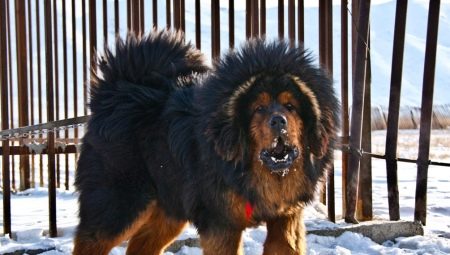
Large breed dogs exude dignity, dignity and confidence. Their become and impressive dimensions cannot but cause admiration among others. On a walk, the owner of such an animal is invariably honored with extremely enthusiastic and respectful views.
What breeds of dogs are among the largest, which representatives of the canine family have especially impressive sizes - we will consider in our article.
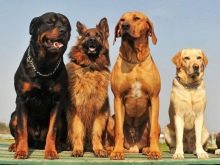
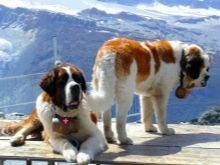

Peculiarities
In accordance with the classification adopted by the International Cynological Federation, all existing dog breeds are divided into several distinct groups. Despite the fact that there is no official distribution of breeds by size, it is customary to distinguish between giant, large, medium, small and dwarf dogs.
Dogs of giant breeds include animals, whose height at the withers exceeds 70-75 centimeters, and weighs at least 50 kilograms in adulthood. For large breeds, in turn, it is customary to include dogs in which the height at the withers is more than 55-60 centimeters, and the weight in adulthood exceeds 25 kilograms.
Large and giant dog breeds have their own specific characteristics. Usually such animals are characterized by phlegmatic, calm and even good-natured disposition, stable psyche. Attacks of aggression are not typical for most large dogs and are most often caused by incorrect upbringing.
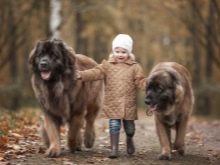
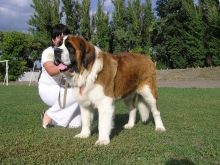

According to dog handlers, large breed dogs are characterized by athletic or powerful physique. Dogs of athletic build have a dry constitution, fine and strong bones, narrow chest. They are more characterized by mobility, activity, increased nervous excitability.Typical representatives of athletic dogs are shepherds, Dobermans, Great Danes, Dalmatians.
Dogs of powerful constitution, in turn, have a loose constitution, massive and heavy bones, a barrel-shaped chest. They are characterized by phlegm, poise, and slowness. The prominent representatives of this category are Molossians (Rottweilers, Mastiffs, St. Bernards).
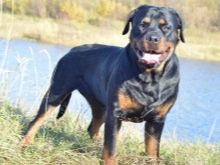

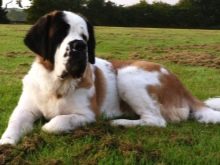
Giant dogs are characterized by intense growth and active physical development in the first year of life. However, puberty in them occurs somewhat later than in small-breed dogs. In the litter, bitches of large breeds give birth to more puppies than dwarf individuals.
The impressive size and high weight determine the predisposition of these animals to a number of congenital and acquired diseases. So, for example, giant dogs more often than representatives of medium and small breeds suffer from diseases of the joints and the musculoskeletal system, pathologies of the cardiovascular system, oncology and skin diseases.
In addition, large dogs are more susceptible to volvulus than others, a pathological condition in which internal organs are twisted.
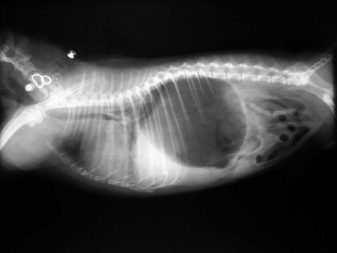

Given the incredible power and strength of such animals, great attention should be paid to their socialization, competent and correct upbringing. You cannot neglect training, which must be done from the very first days of the pet's appearance in the house. It is not allowed to pamper the animal, neglect its physical and intellectual development.
When starting a large breed dog, the owner should take into account that he will have to pay enough attention to his four-legged friend.
Such pets should not be left alone for a long time, deprived of communication and educated by the use of brute physical force. However, the dog should not be allowed to dominate the owner and his family members.
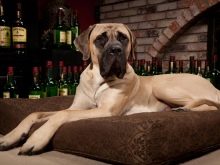
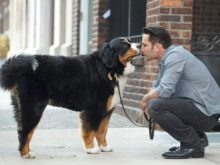
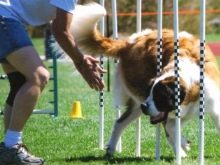
Top breeds
The list of the largest dog breeds includes more than a dozen names. It includes not only the largest in the world, but also unusually beautiful, powerful and strong representatives of the canine family.
English mastiff
Breed of dogs of the molossoid type, considered one of the largest in the world. The height at the withers in adults is not less than 75 centimeters, the weight is not less than 70 kilograms.
They are large, powerful and well-built animals with a wide, long body and prominent muscles. The color can be deer, fawn, brindle, apricot. The coat is short and thick. A characteristic feature of this breed is the recognizable black mask on the muzzle.
In the old days, the ancestors of modern English mastiffs were used for protection, as well as for hunting and baiting bears. The power and strength of the mastiffs allowed them to easily prevail over wild animals. Modern English Mastiffs are most often bred as companion dogs.
Distinctive features of their character are poise, equanimity, calmness, phlegm. They are able to make an excellent company for people of mature and old age.

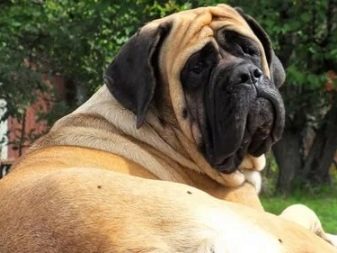
The disadvantages of this breed include predisposition to many serious diseases. Thus, English mastiffs are prone to severe joint diseases, ophthalmological, dermatological and nervous diseases. Often, representatives of this breed develop oncological diseases, and dangerous pathologies from the cardiovascular and endocrine systems are revealed. Typically, the life expectancy of English mastiffs does not exceed 10 years.
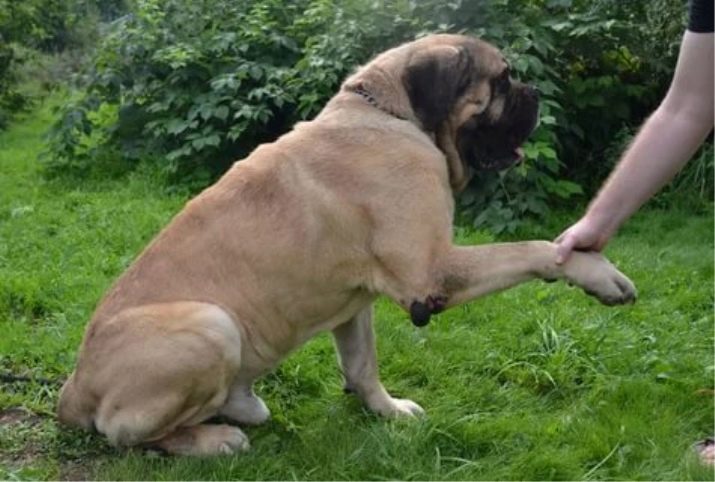
German dog
Another famous breed of giant dogs, bred in Germany in the 19th century. The average height of males is about 85 centimeters at the withers, bitches about 75 centimeters. The weight of these giants can vary between 30-50 kilograms.
These surprisingly graceful and personable dogs are raised mainly as bodyguards, companions, reliable watchmen. The main traits of their character are - poise, self-confidence, calmness, devotion, distrust of strangers. With a competent approach to raising and training Great Danes puppies grow into first-class and reliable companions, kind in relation to their owner, children and other members of the owner's family.
Great Danes are tall and harmoniously built dogs with a sturdy body, strong muscular limbs, an elongated and narrow head. Gait - smooth, confident, slightly measured, with precise and measured stride.

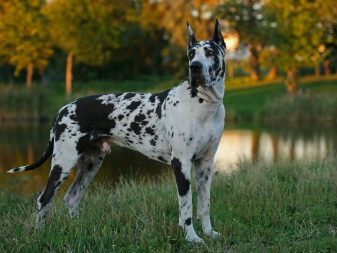
The standard adopted the following types of colors of Great Danes - blue (light bluish-gray with a silvery sheen), deep black, marble (white or gray with black spots), brindle, fawn. The coat is short, abundant, smooth and shiny.
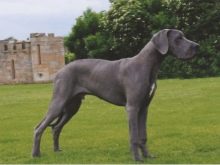


Specific diseases of dogs of this breed can be both congenital and acquired. Most often Great Dane suffer from joint problems (dysplasia, dislocations), diseases of the digestive system. They are susceptible to volvulus, hypothyroidism, and dysfunctions of the immune system. The organs of vision are one of the most vulnerable spots of Great Danes. Observations show that these dogs more often than their fellows suffer from eversion of the eyelids (entropion), microphthalmos, cataracts and glaucoma.
Often, Great Danes have serious diseases and malformations of the cardiovascular system.
Many members of this breed suffer from cystitis, infertility, enuresis, allergies and obesity. The life expectancy of these giants is the lowest among dogs of various breeds. Usually it is about 6.5 years.
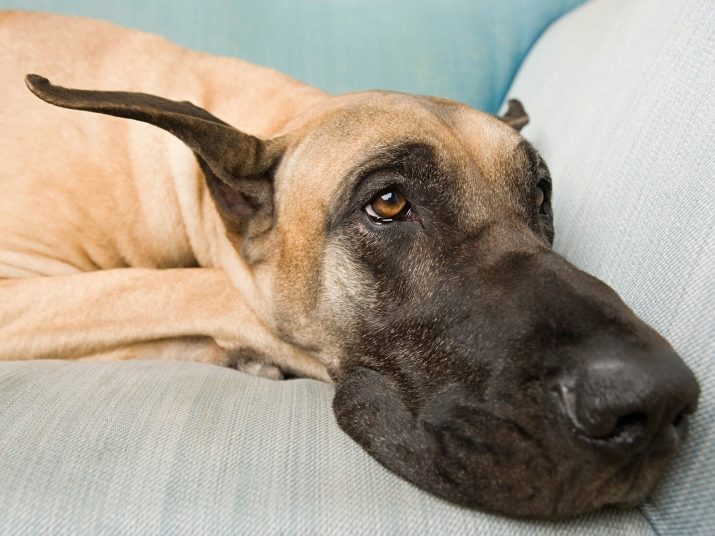
Irish wolfhound
A breed of very large hunting dogs, considered a heritage of the Celtic culture. The height of males at the withers is not less than 80 centimeters, bitches - not less than 70 centimeters. These graceful and beautifully built animals have a minimum weight of from 40 kilograms in bitches and from 55 kilograms in males.
Irish wolfhounds are characterized not only by impressive growth, but also by a spectacular exterior. Despite their solid weight, these dogs do not look massive and heavy. On the contrary, their muscular body looks harmonious, toned and strong. The gait of the Irish wolfhounds is light, swift, flying.
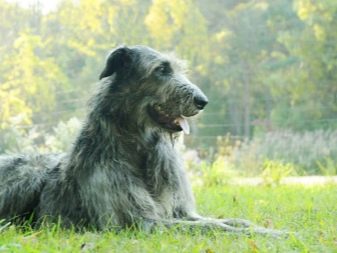
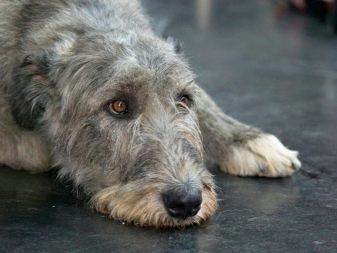
A characteristic feature of the exterior of the Irish wolfhounds is a tough, moderately long coat, giving the dog a somewhat disheveled, but at the same time charming appearance. The longer one on the brow ridges and the lower jaw, six, forms a kind of bangs and beard on the dog's face. It is important to note that the coat of Irish wolfhounds requires specific care.
The character of these graceful and strong animals is good-natured, calm, benevolent. It has been noticed that dogs of this breed are distinguished by special equanimity, patience, and self-confidence. Initially, the specified breed was bred as a hunting dog, but nowadays Irish wolfhounds are increasingly raised as family companion dogs.
The good-natured disposition of the Irish wolfhounds will allow them to easily get along with pets - other dogs and cats. In addition, they easily find a common language with children.
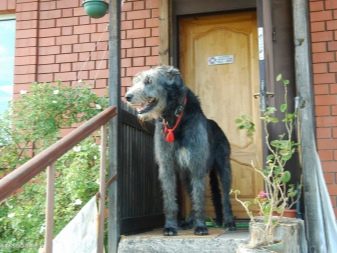
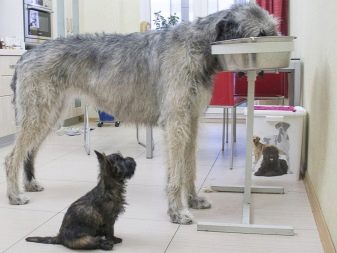
The guarding and protective qualities of the Irish wolfhounds are weakly expressed, however, they will not give themselves or their master in offense. The training of these dogs should be done from a very young age, paying sufficient attention to the physical and intellectual development of animals.
Practice shows that these dogs are prone to digestive problems (bloating, gastrointestinal disorders), diseases of the joints and musculoskeletal system, diseases of the endocrine and cardiovascular systems. Like other representatives of large breeds, Irish wolfhounds often suffer from diseases of the organs of vision - cataracts, glaucoma, retinal dysplasia. The life span of these animals is 6-8 years.With proper care, dogs of this breed can live up to 10 years.
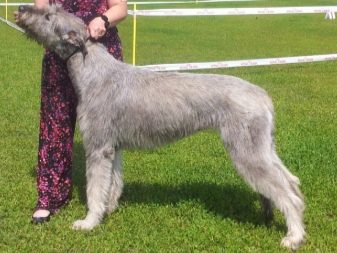
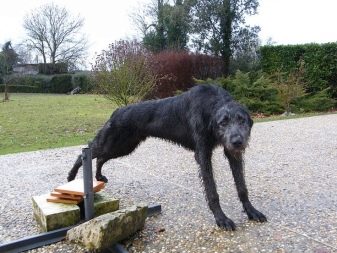
St. Bernard
A popular breed of large dogs, the history of the origin of which dates back to the 17th century. The average height of males of this breed ranges from 80 centimeters, bitches - within 70 centimeters. The minimum weight starts at 70 kilograms.
Throughout the history of the existence of the breed, St. Bernards have been used as rescue dogs, guide dogs, bodyguards, watchmen and guides. In the old days, they were also used as pack animals, transporting food and medicine on difficult and winding mountain routes.
Nowadays, St. Bernards are raised mainly as guard dogs and guide dogs. In addition, a gentle disposition and impressive patience allow the St. Bernards to easily find a common language with children, acting for them as a caring nanny.

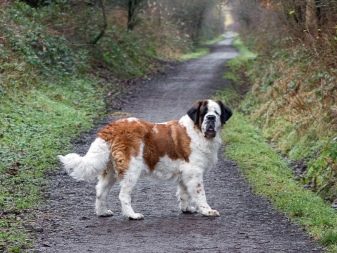
St. Bernards are large, majestic dogs with a powerful massive body, an impressive head. The coat can be either long or short. It is noteworthy that the wool of the St. Bernards does not fall off and does not get tangled, so combing the dog is enough only 1-2 times a week. In addition, the coat of this breed of dogs has the ability to repel water, which allows the animal to feel good even on the most rainy and chilly day.
However, these giants do not differ in good health. Observations show that St. Bernards often suffer from joint dysplasia, obesity, endocrine disorders, heart and vascular diseases.
It is not uncommon for these dogs to have serious ophthalmic problems. The average life span of St. Bernards is 6-8 years, less often about 10 years.
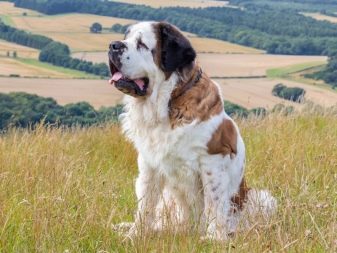
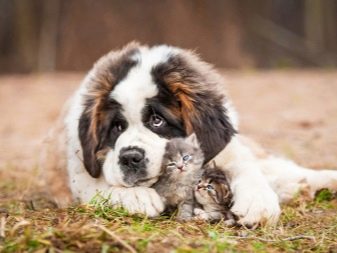
Newfoundland
A very spectacular breed of giant dogs, whose homeland is the island of the same name. In Russia, these dogs are otherwise called "divers" - for their special love for bathing and swimming. The average height of males of this breed is about 70 centimeters, bitches - 65-66 centimeters. Depending on gender and individual characteristics, the weight of Newfoundlands can vary from 55 to 68 kilograms.
Despite the frightening and formidable appearance, these dogs are distinguished by a gentle and friendly character, docile, obedient, sociable. Experienced cynologists argue that in critical situations, the inventive mind of Newfoundlands allows them to independently and correctly make decisions.
They are very powerful and strong animals with a massive body, large and wide head, strong and muscular legs. A characteristic feature of this breed is the presence of a special film between the toes.
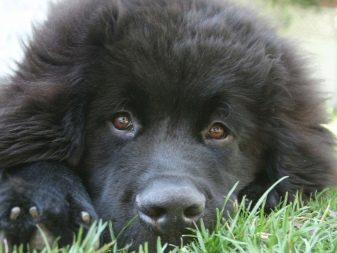

Like St. Bernards, Newfoundland fur repels water and does not get wet. According to the breed standard, slight waviness of the coat is allowed. The classic color of this breed is a rich coal-black color. Brown (brown-chocolate, bronze) and black-and-white colors are allowed. The coat of this breed is thick, long, soft and shiny.
Initially, these dogs were used as sled dogs, as well as in the role of rescuers on the water. Newfoundlands swim great and are not afraid of water at all. Of all the breeds in existence, they are perhaps the best swimmers.
Newfoundlands lend themselves well to training and education. They easily find a common language with children, show increased attention to them, take care of them and protect them.
With a trained dog, you can safely leave your child to swim in shallow water - under no circumstances will the Newfoundland allow a small owner to be at a dangerous depth.
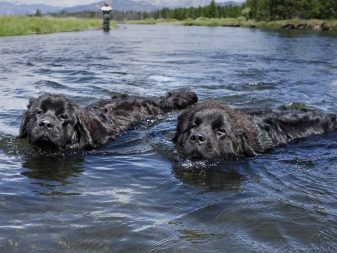

Among the diseases and problem conditions that this breed is susceptible to include the following:
- heatstroke (due to the dark color of the coat, overheating is terrible for Newfoundlands);
- eversion of the eyelids and cataracts;
- joint problems (dysplasia);
- diseases of the cardiovascular system;
- volvulus;
- endocrine disorders.
The average life span of dogs of this breed is 8 to 10 years. This factor is greatly influenced by the heredity of the animal, the general state of its health, housing conditions and care.
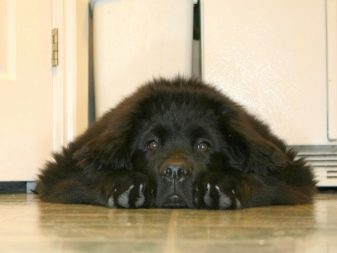
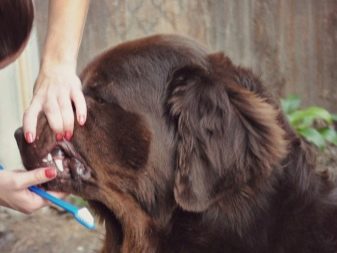
Leonberger
A breed of very large and elegant dogs, bred in Germany. Males are at least 72 centimeters tall, females are at least 65 centimeters tall. The average weight of these giants varies between 45-50 kilograms.
According to dog handlers, Leonberger has absorbed only the best features inherited from the ancestors of the original breeds - St. Bernards, Pyrenean mountain dogs, Newfoundlands. Natural power, endurance, patience and obedience of the representatives of this breed led to their use as draft and guard dogs. Today they are in demand as companion dogs, nurse dogs and guide dogs.
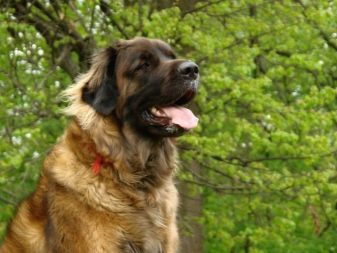
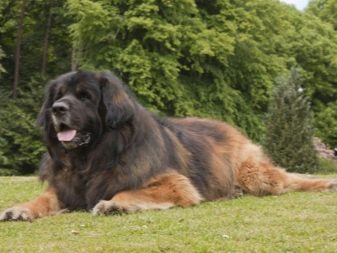
The typical features of this breed are - equanimity, calmness, self-confidence, sociability, the ability to quickly learn and remember new things. The Leonberger combines a calm disposition and a friendly, playful character in an amazing way. They are not characterized by the manifestation of aggression, but such dogs will not give offense to themselves and their owner.
Leonberger - large, powerful and harmoniously built dogs with a powerful body, with a wide elongated head, relatively long, but not sharp muzzle. Very expressive is the look of dogs of this breed, which exudes confidence, dignity and nobility.
Feet - strong, powerful and muscular, back - broad and flat, with a well-defined withers.
Gait - confident, measured, with a spacious free step. The gait is uniform and consistent.
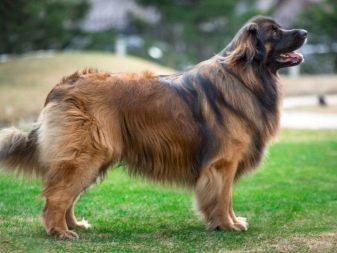

The coat of the Leonberger is very abundant, dense, dense. The coat is long, soft and smooth. Around the neck, the coat forms a voluminous collar that resembles a lion's mane. Color - sand, fawn, red, reddish-bronze. A prerequisite for the exterior is the presence of a characteristic black mask on the face.
Like other large and heavy dogs, Leonberger dogs are vulnerable to the development of joint diseases (dysplasia of the hip joints) and diseases of the musculoskeletal system.
In addition, they often have eversion of the eyelids and a rather rare disease of the hormonal system - Addison's disease. Older and older dogs are often diagnosed with osteosarcoma. The average life expectancy of Leonberger is 9-12 years.
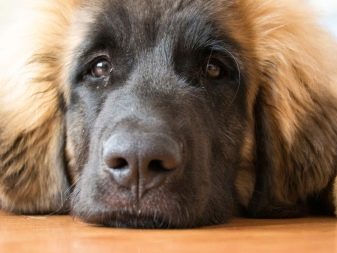

Caucasian Shepherd Dog
A widespread breed of large guard and guard dogs, bred in the Soviet Union. It is a very ancient breed, the history of which is about 2 thousand years old. The minimum height of males of this breed is 68-70 centimeters, bitches - 64-65 centimeters. Average weight varies between 45-50 kilograms.
Dogs of this breed do an excellent job with security and herding tasks. They can be entrusted with the protection of any property - be it home or livestock. These animals are characterized by fearlessness, determination, loyalty, sensitivity, good memory, learning ability and intelligence. They tolerate loneliness well, they can watch the protected area for hours without requiring increased attention from the owner.
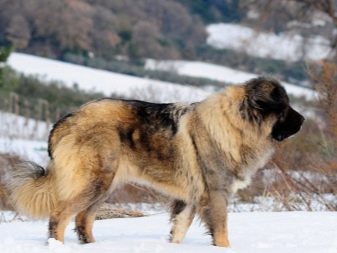

Caucasian Shepherd Dogs are suspicious of strangers. They have great intuition, but a very difficult character. Many males of this breed are characterized by outbursts of aggression and anger, during which animals are able to blow everything around them to smithereens.
Anger is one of the characteristics of this breed., therefore, the education and training of puppies should be dealt with from a very young age. If you do not do this or treat the proper upbringing of the dog with disdain, then in the future it will be impossible to influence the dog.
Caucasian Shepherd Dogs are powerful and massive dogs of the molossoid type. Distinctive features of their exterior are a large, slightly elongated and toned body, a deep and wide chest, a wedge-shaped powerful head with a flat forehead and a wide muzzle.
The appearance of Caucasian Shepherd Dogs makes a strong impression on others.
In many ways, this is facilitated by their lush and very thick coat, which makes the animals seem even larger and more powerful. The density of the coat of the Caucasian Shepherd Dogs allows them to easily survive bad weather and significant drops in temperature.
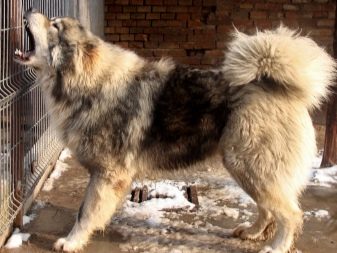
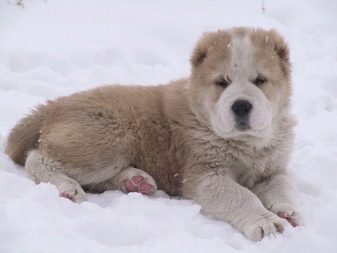
The traditional color of the Caucasian Shepherd Dogs is wolf-gray, chocolate-brown, fawn, reddish-brown. A variegated color is also allowed, as well as the presence of a specific dark mask on the face.
Caucasian Shepherd Dogs have good healthhowever, this breed is not immune to diseases that are typical for large dogs. So, very often in animals of this breed, twists and turns of the eyelids, dysplasia of the joints, bursitis, myopathies are found.
Caucasian Shepherd Dogs are also prone to obesity, which often leads to the development of diabetes mellitus and cardiovascular diseases. The average life span of dogs of this breed is about 10, less often - 12 years.
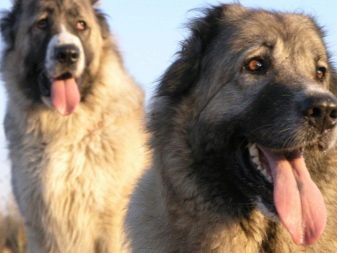

Broholmer, or broholmer
Breed of large dogs of the molossoid type, bred in Denmark. The height of males at the withers is 75 centimeters, bitches - 70 centimeters. The weight of mature individuals is capable of reaching 60 or more kilograms.
In the old days, representatives of this breed were used as hunting, pickling and watchdogs. Fantastic strength and endurance allowed broholmers to easily cope with guarding and grazing livestock, corraling wild boars, bears and deer.
After the Second World War, the breed was on the verge of extinction, but the efforts of foreign dog handlers managed to avoid this. But the number of Broholmers today remains low, as a result of which puppies of this breed are impressively expensive.
Currently, Broholmer dogs are found mainly in Denmark, Finland, and the Netherlands.
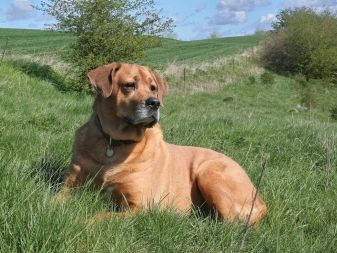
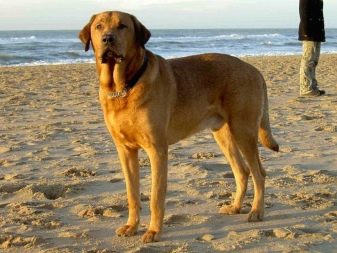
Danish Broholmers are powerful, athletic dogs with a strong toned body, large head, long and strong legs. The coat is short, dense and hard. Traditional color - light beige, bronze-red, dark-red. The presence of a dark mask on the face is allowed.
Broholmers lend themselves well to training, they are smart, intelligent, obedient. Their distinguishing features are a calm disposition, devotion, benevolence. These dogs are wary of strangers, but do not show aggression for no reason.
Typical diseases of this breed are the same as in other Molossoid-type dogs. Their average life expectancy is about 12 years.
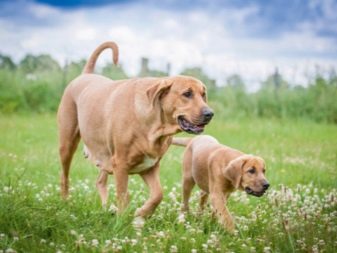
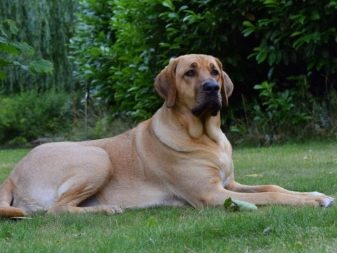
Pyrenean mastiff
A fairly old breed of very large corpulent dogs, bred in Spain. Males of the Pyrenean Mastiffs reach at the withers about 80 centimeters, females - about 73 centimeters. The weight of adults is at least 70 kilograms.
The original purpose of this breed was grazing and guarding livestock. To date, the Pyrenean Mastiffs are used mainly as bodyguard dogs.
Representatives of this breed are very large, powerful dogs with a harmoniously folded, proportional body, strong bones, a wide massive head and strong paws.
Despite their impressive size, the Pyrenean Mastiffs do not look clumsy or ponderous. The gait of these dogs is sweeping, smooth, with a beautiful consistent step.
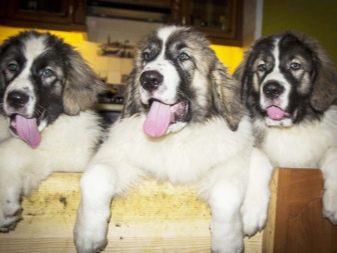

The coat is bristly, moderately long, but not fluffy. The standard color is white with spots of pale gray, brownish-red, black, marble or sand. A characteristic feature of the breed is a mask on the face.
Pyrenean Mastiffs are very intelligent, loyal and adequate animals. Dogs treat their owner with great love and respect, but they are able to obey other family members. These luxurious giants treat children very carefully, patiently perceive their pranks.
Despite the fact that the Pyrenean Mastiffs love to spend time with the owner, they will never insist on his attention. These dogs tolerate loneliness well, so they can be safely left unattended for a long time.

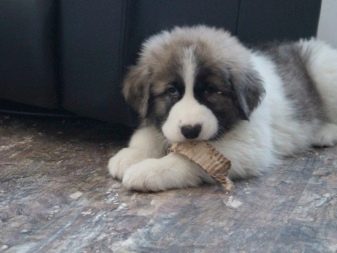
Pyrenean Mastiffs are highly trainable, aided by their unique memory. Most often, the general course of training is enough for them, since the protective and guarding skills in dogs of this breed are innate. In some cases, only minor adjustments to existing abilities may be required.
Considering that this breed goes back to the Molossian type, its representatives are characterized by a predisposition to a number of specific diseases.
The most common here are dysplasia of the joints, ophthalmic diseases and dysfunctions of the organs of vision (eversion of the eyelids, conjunctivitis), volvulus. The average lifespan of the Pyrenean Mastiffs is about 12 years.
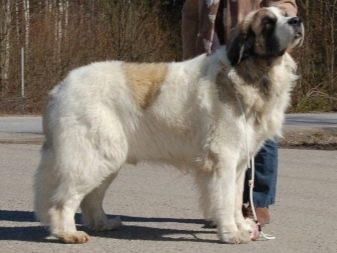
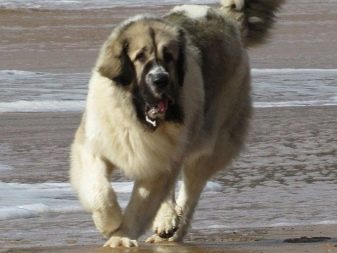
Anatolian Shepherd Dog (Kangal)
The oldest breed of powerful and mighty dogs, bred in Turkey. The growth of males and bitches of this breed can reach 80 centimeters. Weight indicators on average vary from 40 to 65 kilograms.
In ancient times, dogs of this breed were used for hunting lions and protecting livestock from predatory animals. To date, kangals are used as guards to protect farm herds. Cynologists claim that these dogs have no competitors in the ability to reliably guard and protect livestock. Despite their imposing size and visual corpulence, Kangals are capable of developing impressive speed in pursuit of predators.
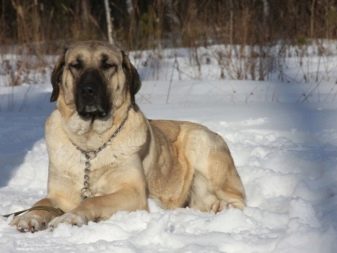
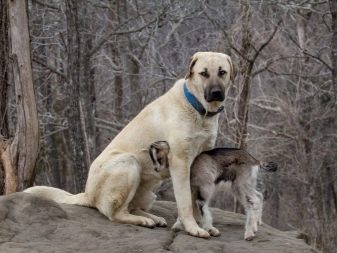
Anatolian Shepherd Dogs are powerful dogs with a rectangular proportional body, large wide head, muscular limbs. The coat can be short or moderately long. The traditional color is sand, white, brindle, fawn, white with biscuit markings. A dark mask is preferred.
Kangals are perfectly trainable, easy to learn. They are characterized by a subtle mind, lightning-fast reaction, distrust of outsiders. Kangals treat children with great care, so they can fearlessly entrust them with the role of an attentive nanny.
Joint pathologies and ophthalmic diseases (entropion) are typical for the representatives of this breed. With proper care, the life expectancy of kangals is on average 10 to 12 years.


How to choose?
When planning to get a dog of a large or giant breed, a potential owner must take into account many nuances associated with the choice, maintenance, care and education of these animals. It is important to take into account that such dogs require a master with a certain temperament, capable of taking a dominant position and having the skills to properly handle large dogs.
At the very beginning, you should decide on the purpose of acquiring a large breed dog. Most often, such pets are brought up to guard the house, protect the family and property. Often, large dogs are acquired for the role of companions that can brighten up the leisure of the owner and his family members.
The choice of its breed depends on what goal the potential owner of a large dog pursues.
Some giant dogs are designed exclusively for protection and hunting, while others do an excellent job of playing the role of nannies and companions. To acquire this or that breed in the hope of instilling qualities atypical for it, at least, is unreasonable.

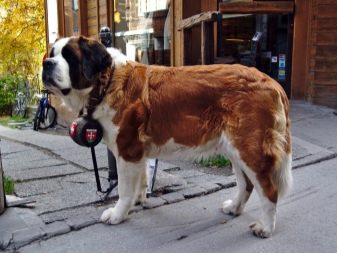
It is important to familiarize yourself with the standards of the breed you like and the requirements for its exterior in advance.If a puppy is purchased for the purpose of further participation in exhibition events, it is necessary to carefully study its pedigree, inquire about the achievements and awards of its parents. In this case, even at the stage of choosing a puppy, it is required to completely exclude possible disqualifying defects from him.
If a potential owner plans to have an animal exclusively for himself, then A puppy's compliance with breed standards may be of secondary importance.
However, both in the first and in the second case, great attention should be paid to the health of the future pet. It is necessary to make sure that the puppy does not have any congenital or acquired diseases and any developmental pathologies.
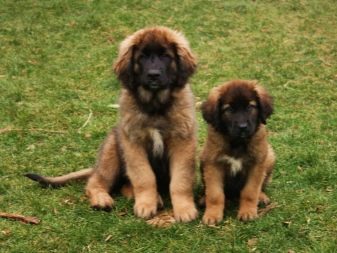
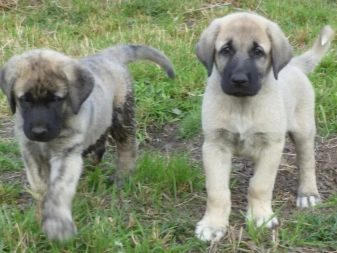
Special attention should be paid to the behavior of the puppy. He should be agile, cheerful, active, cheerful, but not aggressive or cowardly. A healthy puppy shows curiosity and interest in strangers, willingly plays with his fellows. When moving, the puppy should not limp or fall to the sides. These gait defects are often indicative of joint problems and poor coordination.
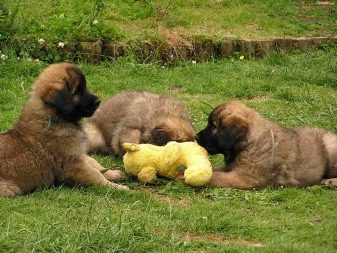
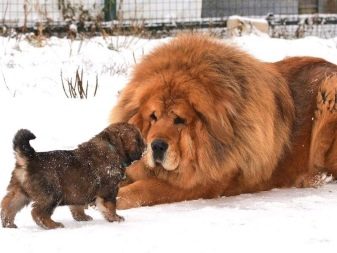
Content specifics
Despite the fact that many large breed dogs are able to take root in city apartments, it is best to keep them in a private house - in an open-air cage with sufficient space. It is strongly discouraged to keep such dogs chained.
Large dogs not only require adequate space, but also regular physical activity. Almost all large breed dogs are prone to obesity, which, in turn, often leads to diabetes mellitus, the development of diseases of the joints and the musculoskeletal system.
These animals also require an appropriate diet enriched with vitamins and minerals.
It is also important to consider the fact that large dogs consume significantly more food every day than their counterparts of small and medium breeds. Naturally, the maintenance of such animals is much more expensive.
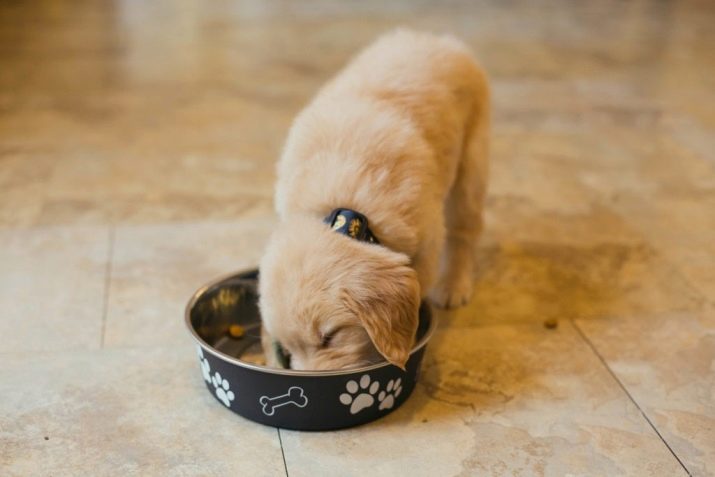
For the features of the largest dog breeds, see below.






































